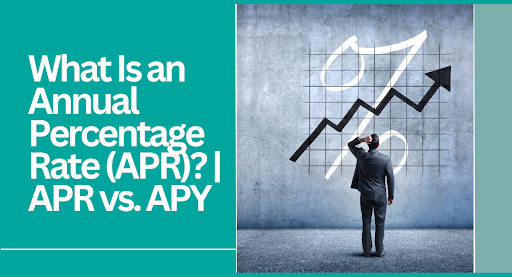What Is an Annual Percentage Rate (APR)? | APR vs. APY

Annual percentage yield (APY) and Annual percentage rate (APR) sound more or less the same. They both have a lot to do with interest rates. But there are tons of differences that set them apart. For instance, APY is the rate of return you can expect while investing or saving money. It represents how much you can earn, factoring in compound interest.
On the other hand, APR is the yearly rate you will pay on a loan, including interest as well as other fees. It represents the cost of the money that you borrowed. It will help you make more informed decisions if you understand the difference between APY and APR. So, let us discuss these terms one by one to understand them better.
APY vs APR |All You Need To Know About These Rates
What Is APR?
Annual Percentage Rate (APR) typically applies when you borrow money through loans, i.e.:
- Home equity lines of credit
- Credit cards
- Personal lines of credit
- Car loans
- Student loans
- Personal loans
- Home loans
APR measures the amount of interest as well as any other fees that you will be charged when you borrow. The lower the APR, the less interest you might have to pay.
APR Vs. Interest Rate
The CFPB sheds light on the fact that, while considering APR vs APY, you must also think about the interest rates. APR includes the interest rate plus other costs, such as insurance, lender fees, and closing costs. If there are no lender fees included in the APR, then this rate, combined with the interest rate, might be the same. This is typically the case for credit cards. Because APR can include costs, including lender fees, it might be more useful than the interest rate when comparing particular types of credit offers, such as auto loans.
What Is APY?
Annual percentage yield (APY) is also known as Effective Interest Rate (EAR). Typically, EAR or APY applies to money in deposit accounts, including:
- High-yield savings accounts
- Money market accounts
- Certificates of deposit
It can display the amount of interest an account could earn in a year. Generally, the higher the APY, the more interest your investment could earn. How much you earn also depends on how much money you have in your account. Moreover, keep in consideration that if the APY for a deposit account is variable, the yield might change after the account is activated.
APY Vs. Interest Rate
APY is a wider measure than the interest rate. This is also because it reflects compound interest and how often compounding happens during a year. Compound interest means you do not get interest on what you have deposited. You can also earn additional interest on the interest you already have earned.
This can make it much more useful for comparing deposit accounts. For instance, let us say two accounts have the same interest rate. The annual percentage yield might show that the one that compounds periodically will earn you more interest than the one that compounds per year. If you wish to keep tabs on your credit, then you can try Credit Breeze, offered by Gifted Financial Services. It is one of the best credit score monitoring services that can help you with your scores.
What Is The Difference Between APR And APY?
Even though APY and APR both measure interest, they are not the same. Generally, the APR measures the interest charged when you borrow money. On the other hand, APY measures the interest earned when you invest or save money. Usually, the APR is associated with credit accounts. The lower the APR account, the lower the overall cost of borrowing might be. On the contrary, APY is mostly associated with deposit accounts. The higher it is, the more you will earn.
Which Is Better, APR Or APY?
APR and APY are both helpful when you are shopping for rates and comparing which of them works the best for you. APR can help you estimate how much you might owe on a car loan, home loan, credit card, or even personal loan. At the same time, APY helps you see how much you can earn in a year in a CD or a savings account. If you are worried that how to improve my credit score, then sign up at Gifted Financial Services. You will be able to see your scores from the three major credit bureaus simultaneously.
APR Vs. APY In A Nutshell
Understanding the difference between APR and APY might take some of your time and effort. We are sure that you have a clearer idea of what sets APR apart from APY. While both of these rates might sound similar, they are a lot different from one another. APRs and APYs both offer vital insights into the investments and loans they describe. However, it is essential to be aware of the restrictions of each at the same time. While APYs are commonly a more realistic indicator of interest owed, APRs can be more insightful of the other costs associated with borrowing apart from interest rates. By understanding the key differences between these rates, any consumer can think of themselves as being armed with the ability to draw effective conclusions from these ways of describing interest.



